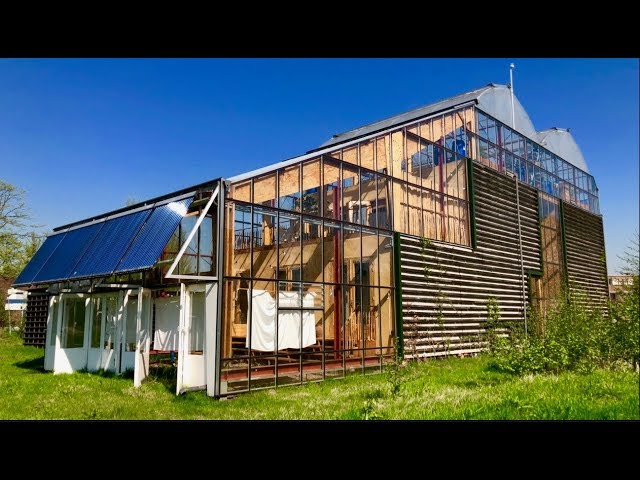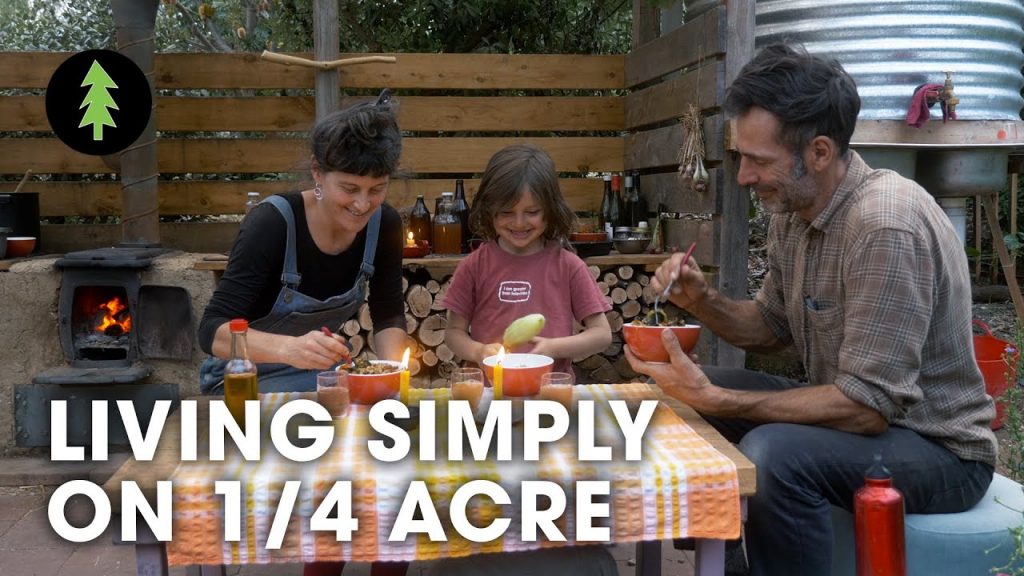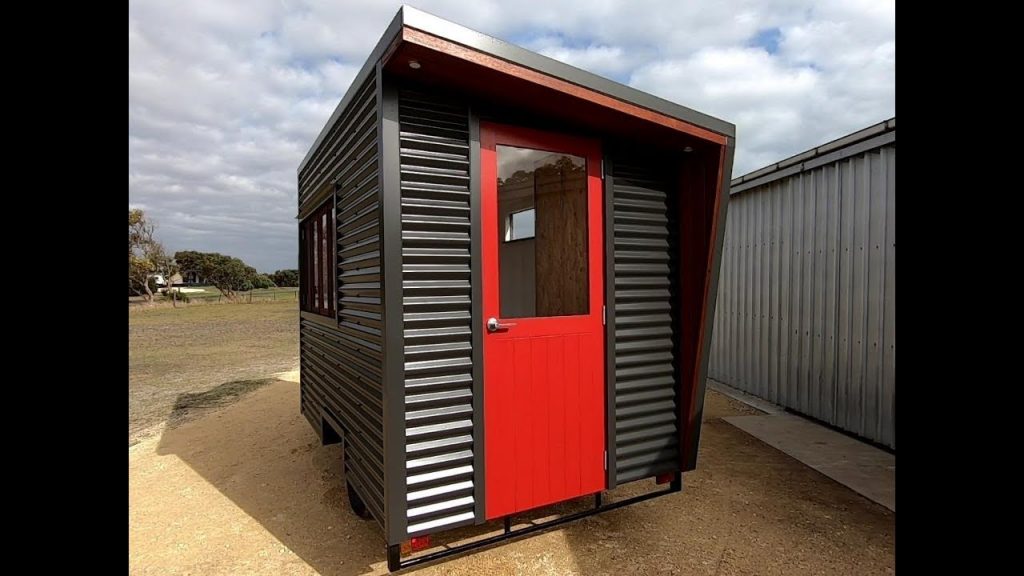Greenhouse-wrapped Rotterdam home regulates climate & grows food

When Helly Scholten was offered the opportunity to spend three years living in a home inside of a greenhouse on Rotterdam’s docklands, she immediately volunteered her family.
Scholten, her partner and two teen daughters moved into the experimental home and immediately began planting the four greenhouses surrounding and atop the home in an attempt to grow enough food to feed their family.
The experimental home, built by students at Rotterdam University’s department of Applied Sciences led by architect Arjan Karssenberg, was constructed from recycled and recyclable materials. Built on stilts it can be dismantled or moved at the end of the experiment.
In order to keep heating and cooling requirements low, inside the greenhouses the walls are coated in loam stucco to act as a heat sink: the loam traps heat from sunlight during the day and releases it during the cooler evenings.
An exterior wall is covered in plants to create a bee-friendly habitat and help regulate temperature. Water is collected in rooftop storage tanks for irrigating the gardens.
Scholten loved her time in the light-filled home, but says there are things she would improve. She would never put a greenhouse above the ground floor, because without the earth as a heat sink, they get too hot. She’d also be sure to coat the loam with a natural finish as some of it deteriorated during the family’s stay (the idea is it can easily be taken down at the experiment’s end by simply turning a hose on it).
How does the greenhouse-wrapped home in Rotterdam compare to the Earthship concept proposed in the 1970s?
A new innovation in sustainable living has emerged in the form of a greenhouse-wrapped home in Rotterdam, Netherlands. This remarkable dwelling is not only designed to regulate indoor climate, but it also doubles as a source of fresh produce.
The concept of greenhouse-wrapped homes is not entirely new. In fact, the idea dates back to the 1970s when architect Michael Reynolds coined the term ‘Earthship’. This concept involves building homes that are completely self-sufficient, utilizing natural materials and renewable resources to create an off-the-grid lifestyle.
The Rotterdam home takes this concept a step further by incorporating a greenhouse as an integral part of the structure. The house is wrapped in a glass exterior that not only allows for plenty of natural light, but also traps solar heat to regulate the indoor temperature. The greenhouse is equipped with a ventilation system that prevents the home from overheating during the summer months, and a heating system to keep it warm during winter.
The greenhouse is also used to grow fresh produce, such as fruits and vegetables. The crops are grown hydroponically, meaning they are grown without soil, using nutrient-rich water to nourish the plants. This system requires less water than traditional farming methods and produces a higher yield of produce.
The benefits of this innovation are numerous. Not only does the greenhouse-wrapped home provide a sustainable and self-sufficient lifestyle, but it also reduces energy consumption and carbon footprint. Additionally, the availability of fresh produce is a major perk for those looking to live a healthy lifestyle.
The Rotterdam home is not the only example of greenhouse-wrapped homes. Similar projects are popping up all over the world, as people recognize the need for sustainable living. As our planet faces the environmental challenges caused by climate change, innovations like these offer a glimmer of hope for a better future.
In conclusion, the idea of a greenhouse-wrapped home is a testament to the ingenuity of man. Using renewable resources to create sustainable shelter and grow fresh produce is a noble concept that has the potential to revolutionize modern living. As more and more people embrace the ideals of green living, we can only look forward to a brighter and more sustainable future.









Here’s where New York City’s sewage really goes
Working Actor Now Homeless in Los Angeles
Piers Morgan – The Luxury Life Of Dubai HD Documentary 2019
RYNO Motors at the Cutting Edge of Innovation
I was sex trafficked for years. Brothels are hidden in plain sight